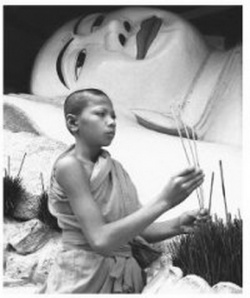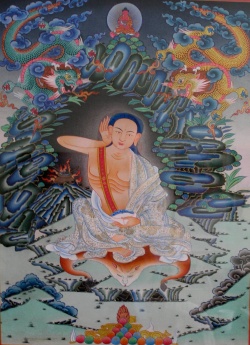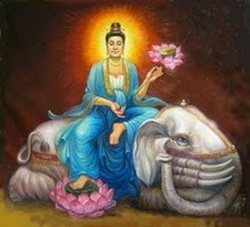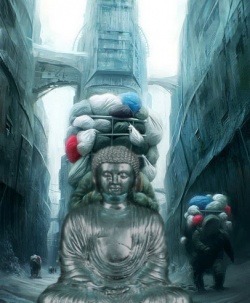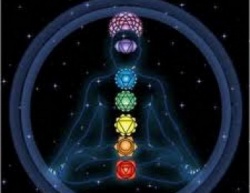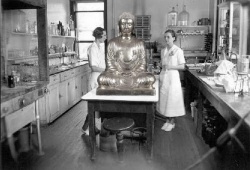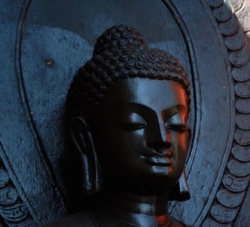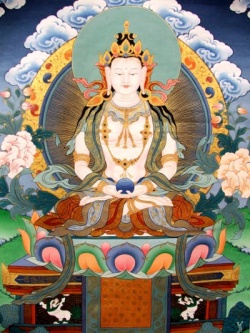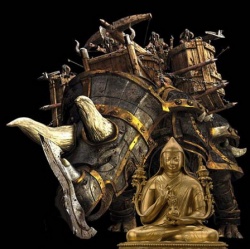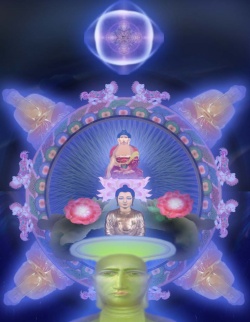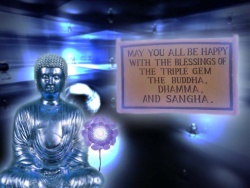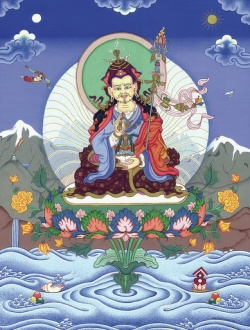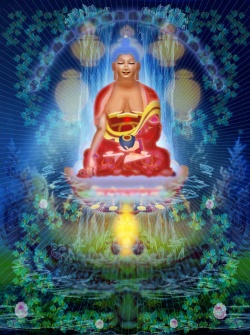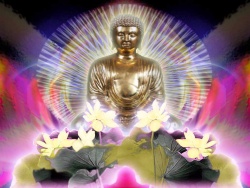The Buddhist Aesthetic nature: A challenge to rationalism and empiricism
The Buddhist Aesthetic nature: A challenge to rationalism and empiricism by Kenneth K. Inada
Vol. 4 No. 2 1994
Pp.139-150
Let me begin with the description of the makings of a surf. Out in the ocean we see the choppy waves suddenly swell and form into a singular wave. As the winds send it close to the reef, it grows into a full size surf with white foamy crests. It picks up speed as it heads for the shores and consumes everything in its wake, but no sooner has it encountered the shallows than it dramatically drops its speed and quickly dissolves itself on the sandy beaches. All this is most relaxing and easy on the eyes.
The point that ought to be made here is that the phenomenon of the surf is a near facsimile of what happens in our ordinary perception of things. We observe the surf in the making and follow it until it dissipates on the beaches. But all this is mere surface observation as we are unmindful of what goes on beneath the surface. Indeed, the dynamics of the surf is such that what we observe are only external manifestations of the total dynamics at play. Ironically though, what is unobserved is ignored or omitted and yet it is responsible for much of the true makings of the surf. We have reduced ourselves to creatures of tangible manifestations. Our perception and understanding of things are, then, influenced greatly, if not totally, by the observable elements. As they are repeatedly observed, they become so-called grist for the perceptual and rational mills.
We literally live in, for and by these elements of perception and remain unmindful of the fact that this is shallow myopic perception. Unfortunately, it becomes standard and continues unabated. The failure to become aware of this myopic perception has been the bane of ordinary existence. On this point, the East has always been wary of this type of perception and has from the outset taken any experience to be full and rounded, without any element, part or aspect being emphasized or dominating. In such hyphenated conceptions as Atman-Brahman, Samsara-Nirvana, yu-wu, yin-yang, etc., there is no strict mutually exclusive dichotomy in the metaphysical scheme of things.
This is truly one of the marvelous and unique features of Eastern metaphysics and yet, paradoxically, it has been the source of the false epithet 'mysterious East'. In this vein, for example, negations in Buddhism are used not as metaphysical nullities but merely to exhibit the limits of rational or logical function. The Buddhist anatman doctrine is a classic case in point. This doctrine, if anything, reveals the open and wider nature of existence, though that is not known by the term itself.
Anatman is not simply the logical opposite of atman, nor is the negation of atman the negation of the self or being.
The narrow concept of the self or atman, according to Buddhist thought, is the result of the attachment to our passions and desires, i.e. to the so-called 'surface' elements of perceptions. With this attachment, perception itself has become soiled or defiled. I could easily refer to this as our poor habits of perception, habits which are germane to the ordinary perception of things. The phrase, habits of perception, was first used by David Hume, I believe, in conjunction with his search for the nature of causality.
Being an empiricist, however, his search was limited and ended in frustration. He also was not a strict metaphysician who pursued the full nature of experiential reality; indeed, he despised metaphysicians and metaphysics in general and his empirical leanings placed more emphasis on and credence to passions and feelings than to reason. He did not, however, place any emphasis on the nature of intuition, especially as it might bear on some resolution of the causal dilemma he had confronted.
It is here that Buddhism from early on had gone deeper in the analysis of ordinary experience than any other thinker. Indeed, much of the explorations made by Buddhism still remain relatively untouched, although we are already exposed to the various doctrines proffered by Buddhism over the centuries. It is at this point that I would like to move forward and present a novel interpretation of Buddhist doctrines so as to bring the dialogue between East and West to some focus and perhaps fruitfulness.
The foregoing discussion has brought us to focus on reality in terms of our experiences. Each of us has our own experience and thus each thrives on our own experiential reality. This, I believe, is true for both East and West, but the difference arises in terms of how that reality is treated when it manifests itself as ordinary experience. Though relative to the selfsame ground of existence, there are many ways in which the same experience is dissected and analyzed.
The West in general has analyzed experience under the rubric of either rationalism or empiricism. Somehow these two became polarized conceptions early on and Western thinkers have thereby suffered in such a way that they have not been able to completely resolve the divide between them, if that is at all possible.
It would seem that the empiricist cannot be a complete empiricist without somehow extending into the mental aspect of things and, likewise, the rationalist cannot be a complete rationalist without touching the physical nature of things. Both are, in their failure, certainly victims of Gilbert Ryle's category mistake. To cut a long story short, the basic schism in the subject-object epistemic framework has compelled a rather curious static analysis of elements at play in both empiricism and rationalism. Perhaps this can be traced back to Plato's sharp demarcation between being and becoming, but where the choice had clearly been in favour of being. Inasmuch as Plato's contribution to and influence on Western epistemology is unsurpassed, it is difficult indeed to criticize him or his philosophy.
However, for the sake of comparative philosophy, I believe there is sufficient justification to question any and all forms of Western epistemology, Plato's not excepted. We are emboldened in our quest for a better view of reality thanks to the quality and uniqueness of thought available from the East. First of all, we find that the East has a characteristically different view of the nature and function of being and becoming, the most basic concepts of metaphysics, and it has not been burdened by these concepts in one way or another simply because it did not take them as mutually exclusive realities. Where the West thrived on schism and dichotomy, the East, contrariwise, took these concepts to be flexible enough to act in complementary or supplementary roles and the goal is always directed towards harmony and the unity of things.
The West has always been resistant to the notion of nothing or nothingness and has a judged it inconsequential to life's function. The West in short adhered to the nature of being, and anything opposing this nature, such as non-being, was immediately ruled out of place. It represented a total substance-view of reality, starting and ending with being. This is the Platonic legacy.
Even with the advent of modern science, with such thinkers as Kepler, Galileo and Newton, the philosophy of being did not completely loosen its hold on human minds. It is true that the Ptolemaic world was replaced by the Copernican, but the Western mind still continued to frame everything in accordance with a substance-view of the world and its components. Newton's view of the universe still had resort to absolute time and space which are relatively easy references for the mind to grasp. But it took the West a few more centuries to witness a dramatic turn in the view of reality, i.e. in terms of Einsteinian physics.
Reality is now on the move and rather than conditioned or burdened by the concept of being, it has taken a dramatic leap into the nature of becoming, a concept which had been set aside for so long that it has now become too heady for the average mind to cope with. For surely the concept of dynamic relativity is not the easiest thing to comprehend, nor is it easy to incorporate it into one's life. Indeed, nearly a century has gone by since Einstein's earth-shattering pronouncement and yet so little progress has been made in terms of changing our view and understanding of reality. In brief, we still live, by and large, in a Newtonjan world for its simplicity and convenience, although in the scientific community the Einsteinian world is an accomplished fact. My point, however, is that the scientific world has greatly outdistanced the Western humanistic world and the gap is widening rapidly.
Here enters our concern. As humanists, it behooves us to take a good hard look at what is happening around us. Already from the vast devastated ecosystem, we have abundant evidence that points to the ill consequences awaiting us. Isn't it an opportune time for us to salvage what can be salvaged in the world of thought? The power of an idea or ideas cannot be underestimated; it is the power that can reshape or remold matter and reality. Here is where comparative thought or philosophy is profoundly meaningful.
As stated earlier, Eastern thought has avoided a strict dichotomous treatment of being and becoming. The sphere of human experience is always taken to be larger than that of reason. As such, it informs reason much more than reason informs it. This is a simple fact but we normally do not pay any attention to it because our habits of perception place a premium on mental function. But the discussion here is not meant to place sense faculties or human experience above reason at all. Indeed, were that the intent, then the argument would be as faulty as placing reason over the senses. No, the point is that there is no priority either way. What kind of a reality, then, is the East referring to?
The Eastern view of reality is always focused on experiential reality which is of the nature of becoming. It should be noted that the nature of becoming can accommodate being but being cannot return the compliment. It underscores the fact that becoming is not only dynamic but open and incorporative of all elements at play. On this point, both Buddhism and Chinese philosophy are at one; indeed, I sincerely believe that on account of this crucial point Buddhism was able to mesh with indigenous Chinese thought, i.e. despite the presence and influence of Confucianism and Taoism, both of which are based securely on the fundamental philosophy of I-Ching, the foundation of fluidity and all changes.
I shall leave aside Chinese thought and concentrate on Buddhism. Buddhism refers to the dynamic experiential reality in terms of its most profound concept of relational or dependent origination (pratuya-samutpada). The concept depicts the fact that the occurring of an event or moment is related to or conditioned by various factors. But the basic point is that dependent origination is in flux, taking place in moment-to-moment evolution in an overlapping sense. This conforms to one of the so-called principles of Buddhism, impermanence (anitya), or the transitory nature of life. The other two principles of Buddhism are the universal nature of suffering (duhkha) and nature of non-self (anatman), all three of which mutually define or support each other in the existentially penetrative sense.
Philosophically, the most important principle is impermanence or momentariness. Although it is the key to understanding human experience, so little attention has been given to it. Much of our understanding of it comes by way of a post-analysis of experience, i.e. we become aware of impermanence or momentariness only after the passage of an event or experience and much of this results from replicated experiences. But impermanence has little, if anything, to do with post-consciousness, for it is part and parcel of the very experience one is going through. Since it is the very process of experience we are concerned with, any reference to it cannot be made wholly by resorting to reason, however clear and precise it may be. Moreover, clarity and precision are delusory in that reference by way of reason is an indirection which has no direct contact with experiential reality.
Again, the aforementioned bias we entertain with respect to the power of reason seems to control our thinking and consequent understanding; but reason is a tool, one of the sense faculties, at least from the Buddhist standpoint, that merely aids in referential analysis. Thus to attribute total authority to reason would be to distort not only its function but also the dynamic nature of experiential reality. As we concentrate on the nature of dynamic experiential reality, we must also be cognizant of the fact that this dynamic reality is an extremely microscopic phenomenon, the dimensions of which defy ordinary perception.
Recalling the simile of the surf delineated at the beginning of this essay, it can be noted that our perception, as it functions in momentary existence, is similar to the surf that builds up and rushes toward the shores. But once again, similar to the surf, much of the phenomena of momentary perception lie hidden beneath the surface manifestation. How can we approach and understand what is hidden? This is a most crucial question. Here, I believe, we can only speculate and reasonably infer certain traits or characteristics as they are related to (or even suggested by) the surface manifestation of our perception.
Short of any yogis type of skill in perceiving bodily functions, we are helpless and usually tempted to infer that our momentariness is merely a linear blob of existence. But this is too simplistic and naive. The Buddhist has always seen the flow or flux of existence in circular, not linear, terms. So that in the case of the aforementioned surf or our perception, the hidden aspect informs us that rather than a simple linear formation a circular, rolling feature seems to manifest the process.
Or, looked at from another standpoint, the surface manifestation seems to come from a deeper source which has at least three aspects: the first is a potential for the dynamic movement, second, the trait of continuity of certain content and third, the openness of the process whereby novel elements are incorporated by the already existing content. Other aspects or features of the hidden are obviously present but suffice it to say that the above three aspects help us to understand a dynamic experiential reality which is the central focus of Buddhism.
Perhaps, it would be more correct to view the process as a series of interpenetrating and interlocking moments. Elsewhere I have discussed momentariness (ksana-vada) in its reflexive nature. [1] That is to say, each moment of existence is meaningful and significant only to the extent that it is related to other moments or events in the continuum and that, fundamentally, in the relational context of existence, paradoxical as it might seem, the moment describes the context just as much as the context describes the moment. This is the basic premise of reflexive nature inherent to experiential reality, but as this nature goes on with such rapidity it escapes our total perception.
Here the mind obviously lacks the requisite power, merely glossing over this nature, because of its basic dualistic function, i.e. a function based on the separation of the subjective and objective components of existence. The mind, in essence, has taken on what I call the lighthouse effect, i.e. it perceives only what comes within the purview of the beacon light and neglects or ignores what does not. This is the root of dichotomy and its consequent attachment, for there is no attachment without dichotomy (separation) and, vice versa, no dichotomy without attachment. Both are partners in an interminable process but, from the Buddhist standpoint, we can terminate this partnership by enlightenment. In this respect, the Buddhist has always disdained dichotomy as the bane of existence, the root-cause of suffering (duhkha). In sum, then, Buddhist reality is coterminous with our momentary existence but it has not been probed fully in the past because of its subtlety and complexity. It remains however a most rich and fertile ground for understanding the dynamics of the life process, East and West. And so we follow the Buddhist lead and explore further the nature of momentariness.
Momentariness and the Aesthetic Nature
The reflexive nature of momentary existence adds new dimensions to the erstwhile linear one-dimensional flow framed within the ordinary temporal context of past-pre-sent-future. The content of each present moment, to be sure, came predominantly from the past but the present is not wholly conditioned or controlled by the past, for in its reflexivity it is always open and comes into play with the past content with novel elements and conditions.
The keen observer will notice that the reflexive nature is in accord with the nature of Buddhist karma, which does not describe an absolute determinism in the linear sense of causality. Buddhist karma is always focused on the makings of momentary existence, i.e. from the making of the present moment to the future moment and never in terms of accepting passively the force of the past moment on to the present.
There is no element of fatalism in this respect. As a matter of fact, it would be proper to assert that 'as one sows so does one reap', so long as the orientation is in the present makings of the moment. This orientation is rather difficult to delineate, as are all other Buddhist doctrines, because of the dynamic nature of our experience. And as stated earlier, the dynamic nature is expanded into what has been referred to as the circular movement with a multifaceted character, i.e. the interpenetrating and interlocking phenomenon. This was delineated as the surf phenomenon, or our apparent sense perception. of reality of existence, we must delve deeper into its nature. Herein lies the key, I sincerely believe, to a universal discourse or dialogue we are searching for. But the search is not easy for two reasons: (1) it has a dynamically elusive character, and (2) we have not been aware of this nature fully because of our prejudice for mere physical and mental accountability. The prejudice unfortunately exists in both the Eastern and Western traditions.
But we must scale this prejudice in order to get at the bottom of momentary perception. Here I would like to expand on this circular nature by stating that our ordinary perception has actually two vital dimensions: the symmetric and asymmetric characters. The former, symmetric, is what we normally take to be the ordinary nature of perception. It is dimensional, spatial, temporal, unidirectional and causal. It is all that is relatable in the oft-framed subject-object perception and guided wholly by the empirical and rational structure of things. It obviously has its limitations in that only what matters in the perception can be framed with the perception based on the senses and the mind. This is of course the accustomed way of life, but in our analysis, it is entirely inadequate. For the fullness of perception to occur, we need to get to know the existence of another dimension in perception which we have not been aware of for the simple reason that it escaped the great minds who focused on empiricism and rationalism. The novel dimension is the asymmetric character.
It is unseen, to be sure, and its presence can only be inferred by way of the seen or ordinary perception. Ironically, ordinary perception needs the asymmetric nature in terms of being what it is, or more properly, the asymmetric complements the symmetric in two ways: (1) it provides continuity to ordinary perception; otherwise, each perception would be a separate act; and (2) it provides substance to ordinary perception; otherwise, each perception would be hollow and without basis. So on both counts, formal and substantive, asymmetric nature is vitally related to the symmetric to round out the perception of things. From the symmetric side, indeed, it can be said that for its part it feeds the asymmetricin the circular dynamic flow. In brief, both are mutually interpenetrating and interlocking but one must always keep in mind the reflexive nature of the moment which prevents any separation or dichotomous treatment.
Before going any further in the analysis of the symmetric-asymmetric dynamics, I wish to recall a few profound remarks made by the great thinker, Alfred North Whitehead (1861-1947). Although he was far from being a mystic, his philosophy bordered on certain mystical strains. He possessed a rare synoptic vision of things, a vision that reminds us of Buddhist prajna, which is wisdom or rare insight that goes beyond mere empirical, logical and rational clarity. At one point he made the following profound statement:
But we are conscious of more than clarity. The importance of clarity
does not arise until we have interpreted it in terms of the vast
issues vaguely haunting the fullness of existence. It is here that the
prominent epistemology of modern centuries has been so weak. It has
interpreted the totality of experience as a mere reaction to an
initial clarity of sensa. [2]
Whitehead was unafraid to go beyond conventional knowledge to seek the fullness of existence. One of his great insights is his accommodation of the aesthetic nature with logic. He said cryptically: "the analogy between aesthetic and logic is one of the undeveloped topics of philosophy".
[3] He considered the distinction between them to be a matter of degrees of abstraction involved. They are at 'the two extremes of dilemma of finite mentality in its partial penetration of the infinite'. [4] That is to say, they start in opposite directions, logic starts from the particular and moves towards abstractions and aesthetics stars from the whole and moves towards details.
[5] Regardless of whether or not the above analysis is correct, Whitehead envisioned great possibilities in bringing aesthetics and logic within a holistic cosmology but, unfortunately, he did not pursue this matter fully. Still, his focus on penetrating the realms of reason (logic) and senses (aesthetics) must be applauded. In a way, I believe, his closeness to the Platonic cosmology of being prevented him from envisioning other aspects of experience. He could not, in short, venture beyond the nature of being (i.e. actual entities, eternal objects, etc.) and consequently could not accept, much less accommodate, any notion of vacuous existence. The logic of things would not permit this, to be sure, but perhaps the nature of aesthetics may be the key to further probes and accommodation of the realm vacated by being, e.g. the possibility of novel interpretation of the notion of non-being. It is here that Eastern thought is not only helpful but insightful. In order to appreciate this point, I shall return to the nature of momentariness and its components of symmetric and asymmetric relationship.
I have yet to see in the West a serious discussion on the dynamics of being and non-being. A basic reason for the lack of discussion probably lies in the dichotomous ways in which we treat the concepts. As dichotomised concepts, they are mutually distinct, having categorical differences, and consequently they could not be discussed within the same realm, much less involved with each other. Again, being dichotomised, non-being is quickly identified as a non-entity, the opposite of being, and thus it could not become a part of the rational or logical function. Simply put, it took on an irrational or illogical nature and thereby ruled itself out of existence. We must of course rid ourselves of the 'out of sight, out of mind' mentality. This was not the case, however, in the Eastern tradition. Being and non-being, in Buddhism in particular, [6] were actively involved in human experience.
This can best be seen by returning to the nature of momentariness. Each moment has two components or phases, symmetric and asymmetric as related earlier, but now, how they are constituted in a particular moment is a most difficult and crucial question, especially as they are interlined internally as well as externally. That is, internally, in the manner in which the symmetric-asymmetric relationship contains in a moment and, externally, in the manner in which a moment so internally related is also linked to other moments in the continuum of momentariness. It should be noted that the internal and external linkages are another way of delineating the interpenetrative and interlocking phenomena of momentariness. They underline the fact that the microscopic moment goes beyond empirical display.
Taking up the internal linkage, it can be said that the symmetric-asymmetric relationship is similar to the nature and content of a surf in both the seen and unseen aspects. While the seen aspect generally refers to the symmetric and the unseen to the asymmetric, this reference admittedly cannot strictly be maintained. Again, generally speaking, the symmetric refers to the tangible and manipulable side of the moment--thus all the empirical and rational elements that we are familiar with.
This aspect is the result of dichotomy and attachment to the dichotomised elements. But if the symmetric nature were taken to be the whole story of perception, as it invariably is in ordinary perception, our understanding would surely be partial and grossly limited. To remedy this condition, we must proceed to understand the role and function of the asymmetric nature. If the symmetric nature depicts the so-called forward thrust in ordinary perception, the asymmetric nature, contrariwise, depicts a backward thrust, but here the nature of the thrust is significantly different in that it is without an act of dichotomy and consequent attachment. In this sense, the asymmetric represents the 'pure' content as contrasted with the 'impure' content of the symmetric.
The purity and impurity are conditioned by whether or not there is attachment (upadana) to the elements of being. [7] In its non-attached nature, the asymmetric is not only pure but also open. And so in its backward thrust, it absorbs and accommodates everything including the content of the past as it gives way to the forward thrust of the symmetric. But prior to giving way to the symmetric, the open and pure asymmetric thrust has already incorporated fresh new grounds which will be taken over by the symmetric forward thrust. The asymmetric serves then as the pure potential in momentariness, i.e. the moment in its full realisation, steps back, so to speak, before stepping forward. In this way, the symmetric-asymmetric relationship is a continuum of cyclic phenomena, a unique pulsation of interlocked momentariness.
The crucial question now is: wherein lies the aesthetic nature? The answer must obviously come from within the cyclic phenomena. Although the details must still be worked out, the aesthetic nature can be treated in two ways. The first is within the symmetric nature whose dichotomous function relates to all empirical and rational elements.
It goes without saying that this is always appealing and attractive and has been the basis for the whole series of aesthetic theories from the simple sensual to the voluntaristic nature of things. The second is within the symmetric-asymmetric relationship where the emphasis is on the whole experience. In this respect, pragmatic theories, especially John Dewey's, [8] come close to the Buddhist view, but he did not go deeper into the metaphysics of experience as did the Buddhist. The Buddhist aesthetic nature is realized in the capture of the proper function of the symmetric-asymmetric dynamics.
This dynamics is extremely subtle and naturally requires more than the involvement of empirical and rational elements and their perfection. We must probe into the very nature of the existence of the elements themselves, a probe we have simply overlooked or ignored in ordinary perception. There has to be a reaching for the total grounds of the perceived elements for, analogously, is it not true that an island does not exist alone but finds itself surrounded by water? Our habits of perception have conditioned us so much that we naively focus merely on the island as if it is an independent existent. Furthermore, there has to be a feel for the basis of change itself apart from the elements that accompany change. For after all, we do have private access to our perceptual process (changes) but, unfortunately, we pay much more attention to the elements than to the process or change itself. This is a clear case of perceptual stasis over process. The Buddhist would go a step further to remind us quickly that this perception is a simple case of placing the cart before the horse. This has been the bane of ordinary perception but little, if any, effort is placed an overcoming it.
The accent is on the wholeness of experiential reality or on the ever-widening perception of things rather than narrowing the field and concentrating on the finite or fragmentary nature of things. It is a glimpse of what we casually refer to as infinity; it is touching base, so to speak, with infinity in momentariness or infinity on the move. For this reason, the momentariness of Buddhist experiential reality is an open moving ontology framed within the matrix of symmetric-asymmetric dynamics. As a way of expanding on this dynamics, we move on to some important implications derived from it. This should further clarify and amplify the nature and value of aesthetics.
Implications of the Symmetric-Asymmetric Dynamics
A fundamental implication of the symmetric-asymmetric dynamics is the interplay of being and non-being, the latter of which is not in any way antithetical to being, as stated earlier. They interplay in complementary ways to constitute a moment but each moment must give way to the overriding force of continuity. This is the nature of momentariness, the so-called life-continuum. Where being is represented by the symmetric nature in which all empirical and rational elements are generated and accommodated, non-being is reflected by the asymmetric nature wherein all empirical and rational elements cease to assert themselves. Thus, on the one hand, there are karmic forces in function wherein dichotomous action and the consequent attachment to the elements so dichotomised reign, and on the other hand, all karmic forces cease to function and thus nothing shows up or stands out.
Non-being, in a sense, is the carryover of being without any form whatsoever. Perhaps it could be stated here mat the asymmetric nature in its non-being characterization refers to what the Zen Buddhist would call the 'formless form', where 'form' is no longer form in the ordinary sense. [9] This would amount to the capture of the form of the moment without being attracted to or ensnared by the display of tangible elements of being. I take this to be the foundation of Buddhist aesthetics.
In more technical terms, the asymmetric prominence over the symmetric is the realisation of sunyata or emptiness. It is the voidness of being with the qualification that the elements representing the symmetric remain as they are and do not obstruct or interfere with momentariness. It is indeed an odd way of describing an experiential phenomenon but emptiness or the voidness of being has proved to be a boon to the development of Far Eastern cultural arts. Let me say further that the asymmetric nature does not in any way cancel out nor eradicate the symmetric nature and its elements. The karma-free nature of the asymmetric means that this aspect of the moment does not constitute or 'carve out' anything. This does not mean inaction or mere passivity but it does point to the incipient nature of what the Buddha referred to as the perception of things as they are (yathibhutam), a perception which I believe is the foundation of naturalism, at least in the Eastern sense of the term.
Let us expand on the concept of emptiness. When the legendary Bodhidharma told Empress Wu of China that there were no merits to her collection of meritorious deeds (e.g. building bridges, schools, hospitals, roads, dams, etc. for the country), he did not mean to deny the deeds themselves. Rather he wanted her to know that the deeds, in and of themselves as attached phenomena, were really nothing to speak of or were simply meaningless; they do, however, take on meaning and significance as they are perceived within the total realm of emptiness (sunyata), hence Bodhidharma's famous remark: 'All is in vast emptiness'. Whether she understood this remark is highly questionable. In our analysis, all her deeds fall in the symmetric realm (aspect of being) and the nature of emptiness belongs to the asymmetric (aspect of non-being).
As the above example reveals, the dynamics of symmetry and asymmetry exhibits a powerful force nascent to momentariness and it could also become a powerful 'tool' in the experiential sense. By this is meant that the dynamics could be a most effective aesthetic tool, especially in terms of creating new art forms, from ordinary paintings to the performing arts. The interplay of elements within the realm of no elements seems strange and novel but, much to our chagrin, it has always been present in our experiences, although the fact of the matter is that we have not been conscious of it nor have we sensed and developed it to any appreciable degree. Here is an area where East-West mutual exchanges could be meaningful.
It should be noted that the relationship between being and non-being has no chronological or temporal priority, in either direction. Normally, priority is assigned to non~being, i.e. we assume that it is natural that non-being produces being or, vice versa, being comes from non-being. This assignment of priority is not only faulty but also groundless. It is similar to the creation ex nihil argument. The search for priority would fall into the dark trap of seeking causal connections.
Although for analysis' sake we resort to the temporal nature of things and seek after cosmological beginnings, in so doing, we invariably return to elements relative to the symmetric realm. As we are bounded by these elements, any resolution would be limited to the so-called bounded realities. But the dynamics as such is unbounded by spatial and temporal dimensions; indeed, these dimensional restrictions pale into indistinction through contact with the asymmetric nature.
In a sense, the dynamics is the reflexive nature of momentariness where the symmetric-asymmetric relationship shows up traits of fluidity and malleability.
These traits are important not only for the adjustment and accommodation of one's momentariness with the external realm of existence but, internally, they characterize the fusing phenomenon of the symmetric and asymmetric natures. Despite the inclination towards the symmetric, the presence of the asymmetric nature tones down or dampens that action. It has already been said that the symmetric tends towards the finite nature of things and the asymmetric towards the infinite but the latter's precise role is subtle. Indeed, to understand its role fully and to implement it in one's momentariness are goals realizable by only a few. These few, like the yogis and masters of the arts, are able to realize the deeper and wider sense of dynamic existence and translate it into creative works of art. The asymmetric, moreover, in its open and extensive nature is the source for the rise of emptiness.
And emptiness, in turn, is the basis for the existence of all (non-empty) elements, paradoxical as it may seem, because these elements are not mere existent but part and parcel of the sea of ontological emptiness, figuratively speaking. In the same vein, it is possible to assert that the symmetric realm is sustained by the presence of the asymmetric. Thus all activities relative to the symmetric, e.g. dualistic thinking, are made possible within the nature of the asymmetric. Dualism of all sorts, Platonic or Cartesian for example, fall within this scheme of things and, in consequence, they all amount to ontological restrictions and limitations imposed by our own epistemological quests which, in turn, have relied upon contrived metaphysical assumptions. Turning to the East, however, we witness the advantage (beauty) of Buddhist thought which accepts dualities and dualistic thinking on the conventional (metaphysical) level but sheds them on the non-conventional (non-metaphysical) level. [10]
The discussion has finally brought us to the great Buddhist insight that the conventional and non-conventional realms of existence are really functioning within the selfsame sphere. We are all too familiar with the famous identity: Samsara is Nirvana and Nirvana is Samsara. [11] The identity is easily misunderstood for its utter simplicity but we must credit it with being one of the greatest ideological forces in the dissemination of Mahayana Buddhism. Unfortunately, the mechanics of this identity has not been worked out, for the usual prescription to understanding or experiencing it has been a resort to meditative discipline.
My analysis, hopefully, gives a closer glimpse at the workings of the conventional and non-conventional realms. For instance, while the dominance of the symmetric aspect relates to all happenings in the conventional realm, the dominance of the asymmetric, without completely ruling out the symmetric elements, relates to perception of the non-conventional realm. From the foregoing discussion, it is an easy extension to the Buddhist two-truth theory of conventional truth (samvrti-sat) and non-conventional (absolute) truth (paramartha-sat). The technical term, samvrti, can be translated as pointing at an overall covered nature of the truth of existence, i.e. the symmetric with its dualistic elements hinders or obstructs a clear, full perception of things. The other technical term, paramartha, refers to crossing the bar of hindrance or obstacle to achieve the aim of clear, full perception. The Buddhist lives with both truths, but is always mindful that the non-conventional truth is greatly superior and more auspicious for living than the conventional.
The implications of the symmetric-asymmetric dynamics are inexhaustible. [12] However, the main concern here is to indicate that the dynamics are the grounds in which the aesthetic nature is experienced. This aesthetic nature which arises from a vibrant balance of the symmetric and asymmetric natures is a common property in any experience; yet we gloss over it because we are not accustomed to its presence nor do we have an inkling of knowledge of it. We dichotomise, for example, without sensing the fact that there is a non-dichotomous realm in which the dichotomous function goes on. This is not to say of course that the non-dichotomous realm acts as a counterforce or a foil.
Far from that, it merely means that the dichotomous function requires to be rounded out in the total ambience of momentary existence. In another sense, it can be said that the dichotomous function creates so-called vacuous (independent) existents, i.e. the dichotomous nature of the subjective and objective components invariably brings on pockets of existents within the total flow of existence. In other words, although our momentariness is a dynamic plenum of existence which should not be truncated in any way, nevertheless our karmically distorted or skewed perceptions vitiate against the natural fullness of momentary existence. It might be added here that relative nature cannot incorporate the absolute, total and unified nature of things. But the absolute could and indeed does incorporate and perceive the relative to the extent that the absolute is based on the asymmetric realm. The reason for this is that where the relative is in the nature of the contrived, manipulative and karmic, the absolute has no such nature. Obviously, our conventional lives require the symmetric realm and are dominated by it, but in order to acquire the plenum of existence, it would require more than the symmetric, i.e. the effort to 'uncover' the nascently present asymmetric realm.
The plenum of existence is moreover open at all times. Without this openness, new spheres of creativity will not be possible at all since the creativeness is based on novel concrescence of all conditions within the matrix of the symmetric-asymmetric dynamics. The aesthetic balance, so-called, becomes the ground for the concrescence. As one could readily see, the aesthetic nature is not a static feature lodged in some object or condition of the perceiver but one which is fluid and refers to the very makings of any object or condition of the perceiver, without arbitrarily imputing such a nature to anything. In this sense, the aesthetic nature is the basis of all creative acts and does not refer to any feature of a finished product of whatever kind.
But certainly it will be admitted that the appreciation of a certain art form entails intimacy with the aesthetic nature since appreciation itself is a series of dynamic events. Though always open, the plenum of existence is never a nondescript and passive undifferentiated continuum, nor is it a complete void. Here it is important to distinguish between (1) metaphysics of the first principle type and (2) metaphysics that describes experiential reality. The first refers to umbrella concepts that rule over or govern all reality in every respect, such as the concept of a supreme being with absolute attributes.
The second refers to descriptive concepts derivable from the attainment of and intimacy with the truth of existence. [13] The truth of existence is a holistic plenum wherein the perceptual and non-perceptual realms coincide, although unknown to the ordinary perceiver. This is where the differentiated harmoniously blends with the undifferentiated. It is but another way of elaborating on the nature of the Net of Indra or Huayen metaphysics, the discussion of which will have to wait another occasion. In sum, then, the truth of existence is another way of revealing the aesthetic nature which normally lies hidden or is simply crushed under the weight of the symmetric. The penchant for and grip of the symmetric is overpowering, to say the least, just as we are constantly reminded of the relentless universal nature of suffering (duhkha). Indeed, duhkha and symmetric are by and large cognate terms.
Meditative discipline, finally, is the sine qua non for the realisation of the truth of existence or for enlightenment. The Satipatthanasutta expands on the meditative exercise of samatha-vipassana, the cult of tranquility or rest and of insight or the clear holistic perception of things. Insight does not arise without first achieving tranquillity or rest. This is so rudimentary and yet so many do not understand the significance and value of developing tranquillity or rest.
The problem lies, I believe, in the inability to understand that the nature of tranquillity and rest exists potentially in one's own momentariness and consequent failure to implement it. To expand, the cult of tranquillity and rest involves the realisation of the presence of the symmetric elements within the asymmetric nature. It is a realisation of the differentiated within the undifferentiated and not the reverse--the undifferentiated within the differentiated--as some are wont to assert. As the differentiated seeks an abode in the undifferentiated, all that it represents becomes 'pacified' and remains silent. Silence is golden because there is now an intimation with the aesthetic nature which opens up the way to a clear holistic perception of things as they are. We are awakened to the deep silence of the forest as we hear the songbird or the painful cries of the cicada but the moment of silence and sound reveals the vibrant aesthetic balance of things.
NOTES
[1] INADA, KENNETH K. (1992) The reflexive nature of momentariness (ksana-vada), in DAVID LEE MILLER & RAMAKRISHNA PULIGANDLA (Eds) Buddhism and the Emerging World Civilization (Carbondale, IL: Southern Illinois University Press) 1992 [2] WHITEHEAD, ALFRED NORTH, (1938) Modes of Thought (New York: The MacMillan Company) p. 148 [3] Ibid., p. 84 [4] Ibid. [5]Ibid., p. 85
[6] It should be noted that Chinese thought, especially Taoism, maintains the dynamics of being (yu) and non-being (wu), based on the philosophy of change (yi). The cosmology of human experience as well as of the world is best exemplified by the constant yin-yang mutual penetration. [7] The doctrine of non-self (anatman) immediately comes to mind. The doctrine of impermanence does not permit attachment, which is after all a form of permanence or staticity, and yet in our daily experiences we invariably set up a dichotomous subject-object perception of things. The notion of a self-oriented perception is not possible within the context of impermanence or the transitory nature of existence. The Buddhist has demonstrated that the self is an organic aggregation of the five components (rupa, vedana, samjna, samskara, vijnana). The aggregation is not permanent but short-lived within the fluidity of things. [8] DEWEY, JOHN (1958) Art As Experience (New York: G. P. Putnam). [9] My good friend, Dr. Richard DeMartino, a Zen enthusiast, coined a phrase which I like very much, 'nondual dualism'. He used it to refer to the unique Zen experience of satori. His thinking is definitely along my lines of the symmetric-asymmetric dynamics. [10] It was the Buddha's original insight that the rise and cessation of suffering take place in the same realm, comparably to illness and health occurring in the same body. [11] Nagarjuna (c. 150 AD) crystallised this thought in his Malamadhyamakakarika (Verses on the Fundamental Middle Way Doctrine), XXV, 19, 20.
[12] For example, time does not permit me to discuss such important conceptions as the conduct of the Bodhisattva, the practice of Buddhist precepts--especially the brahmavihara (loving kindness, compassion, sympathetic love, equanimity)--and the exercise of meditative discipline. All of these could be expanded within the nature of the symmetric asymmetric dynamics.
[13] It is necessary to distinguish between the truth of existence and the existence of truth. This is not a play on words. Where the former refers to the quest for the pure enlightened nature of things, the latter refers to the quest for empirical and rational truths. The latter focuses on objective and relative matters and thereby thrives on plurality and variety, all of which have the makings of conventional truths.


